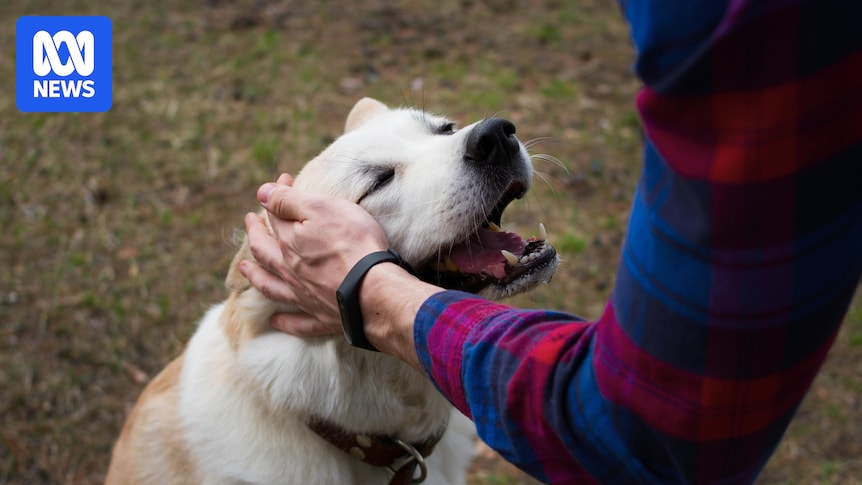
In a heartfelt Instagram post, British Formula 1 driver Lewis Hamilton recently shared the profound grief he experienced following the death of his beloved dog, Roscoe. Hamilton revealed that Roscoe passed away in his arms, marking his first encounter with the painful decision of euthanizing a pet. “It is one of the most painful experiences,” Hamilton wrote, expressing a deep connection with everyone who has endured the loss of a cherished animal companion.
Hamilton’s experience resonates with many pet owners, including Fiona Koenig, who was 22 when she faced the difficult decision to euthanize her treasured Burmese cat, Artemis. Despite extensive investigations into Artemis’s declining health, no solutions emerged. Now a counselor in Newcastle/Awabakal specializing in pet loss grief, Koenig describes her sorrow as “really complicated,” compounded by societal norms that often dismiss such grief. “I had to really feel rage and anger,” she recalls, “but I just wouldn’t let myself because I was like ‘you’re not supposed to be upset about this. It’s just a cat.'”
The Bond Between Humans and Pets
Pets offer unconditional love and companionship, making their loss deeply impactful. Vanessa Rohlf, a clinical counselor in Naarm/Melbourne specializing in animal bereavement, emphasizes the unique bond between humans and their pets. “Companion animals are really special in that they provide unconditional love, and they really provide a space where we can truly be ourselves,” she explains. Pets also “ease loneliness” and “provide stability,” she adds.
Dr. Rohlf notes that interactions with pets can trigger the release of oxytocin, often referred to as the “cuddle hormone,” and increase the levels of dopamine and serotonin, hormones associated with happiness. Koenig highlights that pets often share intimate aspects of daily life, making their absence profoundly felt. “They slept in your bed, walked with you to the bathroom, watched you while you had a shower and ate your breakfast with you,” she says.
The Process of Pet Euthanasia
Understanding the euthanasia process can help pet owners prepare for this challenging decision. Jackie Campbell, a veterinarian specializing in palliative care on the Sunshine Coast, notes that advances in veterinary medicine have led to more complex decisions regarding aging pets. “Owners are then faced with more complex decisions and more emotional decisions than the generation before,” she explains.
Jessica Wilde, chief veterinary officer at the Lort Smith Animal Hospital in Naarm/Melbourne, describes the typical euthanasia procedure. It begins with intravenous access, often via a catheter in the pet’s leg, followed by light sedation to ensure calmness. “It can take 10 to 20 minutes for that to come into effect,” Dr. Wilde says, allowing owners time to be with their pet. The final step involves administering an anesthetic to stop the heart quickly. Dr. Wilde reassures owners that any final movements are not signs of distress.
Knowing the Right Time
Determining the appropriate time for euthanasia involves careful consideration. Dr. Wilde explains that it is typically considered after a pet has aged and developed chronic conditions. “We’re normally working with those [owners], seeing them probably more regularly at that point and talking to them about the quality of life of the pet,” she says. Dr. Campbell emphasizes the importance of timing, stating, “the most important thing is that we don’t make that decision too early [and] equally that we don’t make that decision too late.”
Dr. Campbell also highlights the anticipatory grief pet owners may experience as their pet’s life nears its end, which can last for months or even years. In cases of unexpected incidents, such as accidents or trauma, the decision becomes even more complex, requiring discussions about the extent of injuries and treatment options.
Addressing Disenfranchised Grief
The grief associated with pet loss is often disenfranchised, meaning it is not widely recognized by society. Dr. Rohlf points out that while societal understanding is improving, phrases like “it’s just a dog” or “when are you going to get another?” can unintentionally dismiss the depth of the loss. Koenig concurs, noting that cultural norms often fail to acknowledge pet death as a legitimate reason for grief. “People think that you’re not supposed to be this sad about a dog or a cat,” she says.
Dr. Rohlf stresses the importance of validating one’s grief. “Grief is a really natural and normal response to losing a loved one,” she explains. She compares grief to a wound that requires care and attention to heal over time. Seeking meaning in the pet’s life and the joy they brought can also aid in the healing process. Additionally, seeking support from understanding friends, family, or therapists can be invaluable.
Support and Healing
For those struggling with pet loss, resources like Griefline and Lifeline offer free support services. Koenig advises individuals to keep themselves safe and recognize that the loss of a pet can elicit profound grief. The journey through pet loss is deeply personal, and acknowledging the significance of the bond shared with a pet is a crucial step towards healing.
As pet ownership continues to rise, understanding and addressing the emotional complexities of pet euthanasia and loss become increasingly important. The experiences of individuals like Lewis Hamilton and Fiona Koenig highlight the universal nature of this grief, underscoring the need for compassion and support in navigating such a deeply personal journey.






